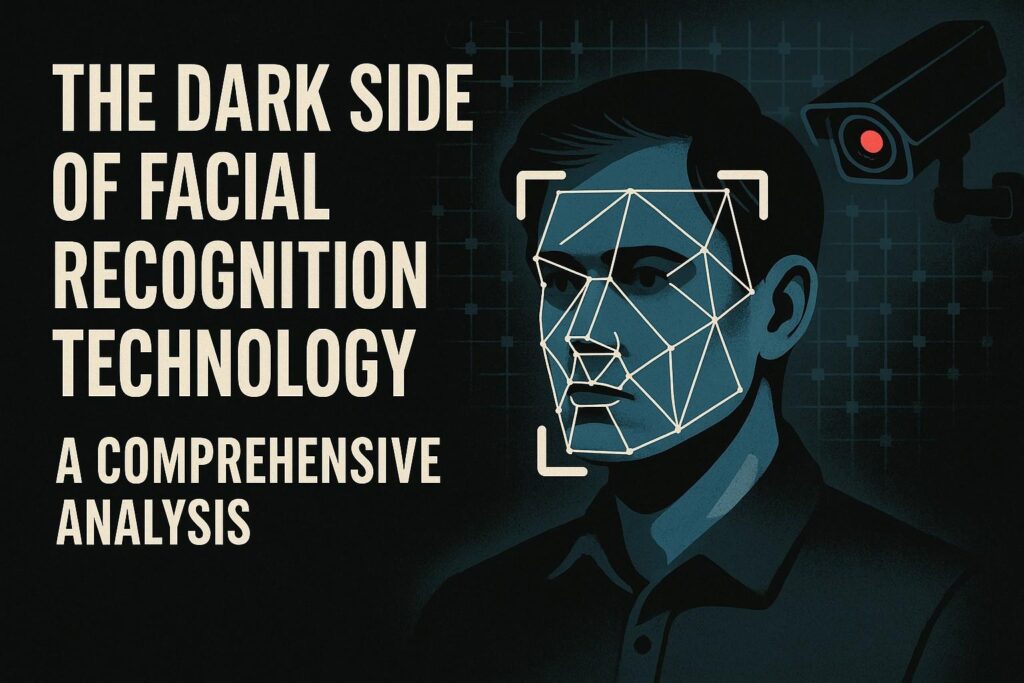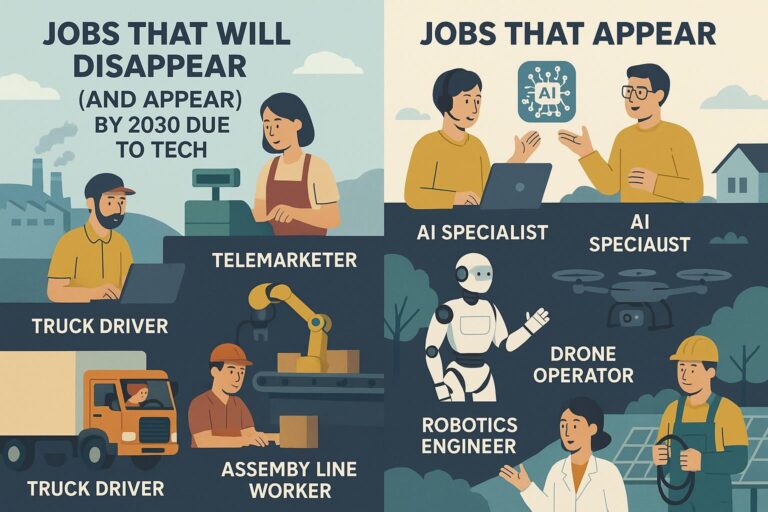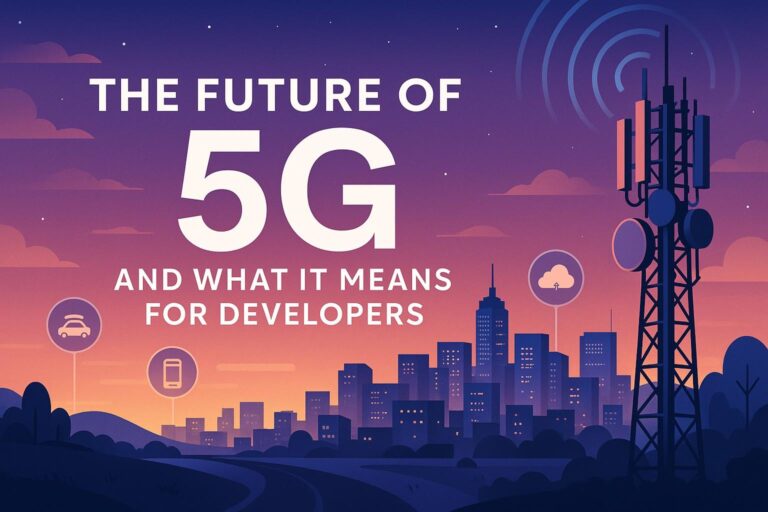
Facial recognition technology has rapidly transitioned from science fiction to a common feature in everyday life. It unlocks smartphones, tags people in social media photos, and aids in law enforcement investigations. While its benefits in convenience and security are clear, the widespread adoption of facial recognition also brings with it significant ethical, legal, and social challenges.
This article delves into the darker implications of facial recognition technology, highlighting the risks, controversies, and questions that society must address as this powerful tool becomes more embedded in our world.
What Is Facial Recognition Technology?
Facial recognition is a type of biometric technology that identifies or verifies a person’s identity using their facial features. It uses artificial intelligence (AI) and machine learning algorithms to map facial patterns from images or videos and compare them to databases for matches.
Common applications include:
- Device unlocking and secure authentication
- Airport security and border control
- Law enforcement and surveillance
- Targeted advertising and retail analytics
- Attendance tracking in workplaces and schools
- Emotion detection and behavioral analysis
Despite these useful functions, facial recognition’s dark side lies in its potential for misuse, lack of oversight, and the fundamental threat it poses to civil liberties.
Key Concerns of Facial Recognition Technology
1. Privacy Invasion
Facial recognition enables surveillance at an unprecedented scale. It can identify and track individuals without their consent, often in public spaces where people expect some degree of anonymity.
Risks include:
- Continuous monitoring by governments or corporations
- Collection of facial data without user awareness
- Erosion of privacy in both public and semi-private spaces
- Psychological impact of being constantly surveilled
The ability to identify individuals in real-time blurs the line between public and private life, potentially leading to a surveillance society where every action is observed and recorded.
2. Lack of Consent and Transparency
Many facial recognition systems are deployed without informing the public. Individuals may be unaware that their facial data is being captured, stored, or analyzed.
Issues include:
- No opt-out options for users
- Absence of clear policies on data usage and retention
- Covert implementation by both public and private entities
- Lack of transparency in algorithm training datasets and usage
Without transparent practices and user control, people cannot make informed decisions about how their biometric data is handled.
3. Bias and Inaccuracy
Numerous studies have shown that facial recognition algorithms can exhibit bias, particularly against women, people of color, the elderly, and marginalized communities.
Challenges include:
- Higher error rates for non-white and non-male individuals
- Risk of false positives and wrongful identification
- Algorithmic bias resulting from unbalanced training datasets
- Disproportionate impact on minority groups and vulnerable populations
These biases can result in discriminatory outcomes, such as unjust arrests, denial of services, or increased surveillance, exacerbating existing societal inequalities.
4. Surveillance and Authoritarian Control
In authoritarian regimes, facial recognition has been weaponized for mass surveillance, social control, and political repression.
Examples include:
- Tracking and monitoring dissidents or protesters
- Enabling predictive policing and social credit systems
- Intimidating citizens and stifling dissent
- Mandatory facial scans for access to public services
Even in democratic societies, there is concern that these technologies could be used for similar purposes under the guise of national security, crowd control, or crime prevention.
5. Data Security and Breaches
Facial recognition systems store sensitive biometric data that, if compromised, cannot be replaced like a password or credit card.
Risks include:
- Hacking of facial databases containing millions of identities
- Unauthorized access or misuse by insiders or third parties
- Long-term exposure due to the immutable nature of facial data
- Cross-referencing facial data with other personal data for profiling
A breach of this kind not only endangers individual privacy but also undermines trust in biometric technologies.
6. Legal and Ethical Vacuum
Facial recognition often operates in a regulatory gray area with minimal oversight in many parts of the world.
Legal challenges include:
- Lack of standardized frameworks for consent, governance, and enforcement
- Limited legal recourse for individuals harmed by facial recognition misuse
- Inconsistent global regulations and jurisdictional ambiguity
- Absence of international treaties governing biometric surveillance
Ethical concerns also abound, particularly regarding informed consent, data ownership, purpose limitation, and the implications of constant surveillance in a democratic society.
Real-World Incidents and Controversies
- Clearview AI: Scraped billions of public images from the internet to build a facial recognition database used by law enforcement, raising major concerns about consent, legality, and civil rights.
- San Francisco Ban: In 2019, became the first major U.S. city to ban the use of facial recognition by government agencies, setting a precedent for other cities.
- False Arrests: Documented cases of wrongful arrests, particularly involving Black men, due to inaccurate matches by facial recognition algorithms.
- Mass Surveillance in China: Used to monitor Uyghur Muslims and suppress dissent, showcasing the technology’s potential for authoritarian abuse.
- Retail and Workplace Surveillance: Stores and employers using facial recognition to track employees and customers without explicit permission.
These incidents underscore the urgent need for oversight, ethical guidelines, and legal accountability.
Regulation and Pushback
Growing awareness and activism have led to various efforts to regulate or restrict facial recognition technology.
Examples include:
- City-level bans in San Francisco, Portland, and Boston
- European Union proposals for AI Act with facial recognition restrictions
- Proposed U.S. legislation like the Facial Recognition and Biometric Technology Moratorium Act
- Corporate moratoriums by IBM, Microsoft, and Amazon halting police sales
- Civil rights groups lobbying for stricter regulation and public consultation
However, comprehensive regulation remains limited, fragmented, and reactive rather than proactive.
Balancing Innovation with Responsibility
Facial recognition technology holds great promise, particularly in areas like fraud prevention, smart city infrastructure, accessibility, and healthcare. But its deployment must be ethical, transparent, and subject to public scrutiny.
Steps toward responsible use include:
- Enacting comprehensive data protection and privacy laws
- Mandating algorithmic transparency and third-party audits
- Ensuring informed consent and opt-out mechanisms for users
- Limiting use to narrowly defined, necessary applications
- Establishing independent oversight bodies with enforcement powers
- Promoting public discourse and stakeholder involvement in policymaking
Final Thoughts
Facial recognition technology represents both a marvel of innovation and a potential tool for surveillance and control. Its rapid adoption across industries and governments demands careful scrutiny and thoughtful regulation.
As societies increasingly rely on artificial intelligence for decision-making, the ethical, legal, and social implications of facial recognition cannot be ignored. Individuals, organizations, and policymakers must work together to ensure that this technology is developed and used in ways that respect privacy, promote fairness, and uphold democratic values.
The future of facial recognition is not just a technical issue—it is a matter of civil rights, human dignity, and societal integrity.

I’m Shreyash Mhashilkar, an IT professional who loves building user-friendly, scalable digital solutions. Outside of coding, I enjoy researching new places, learning about different cultures, and exploring how technology shapes the way we live and travel. I share my experiences and discoveries to help others explore new places, cultures, and ideas with curiosity and enthusiasm.






